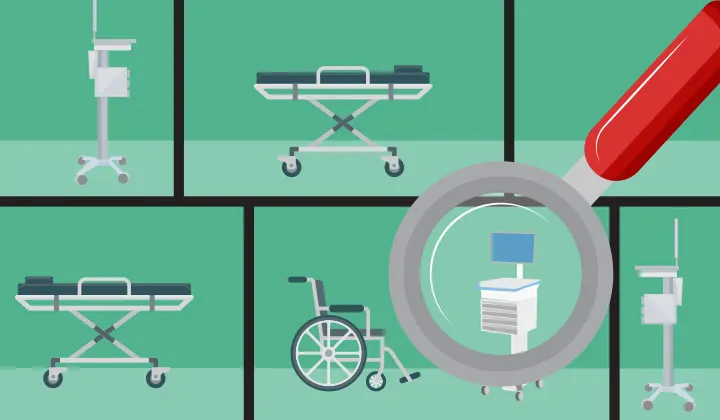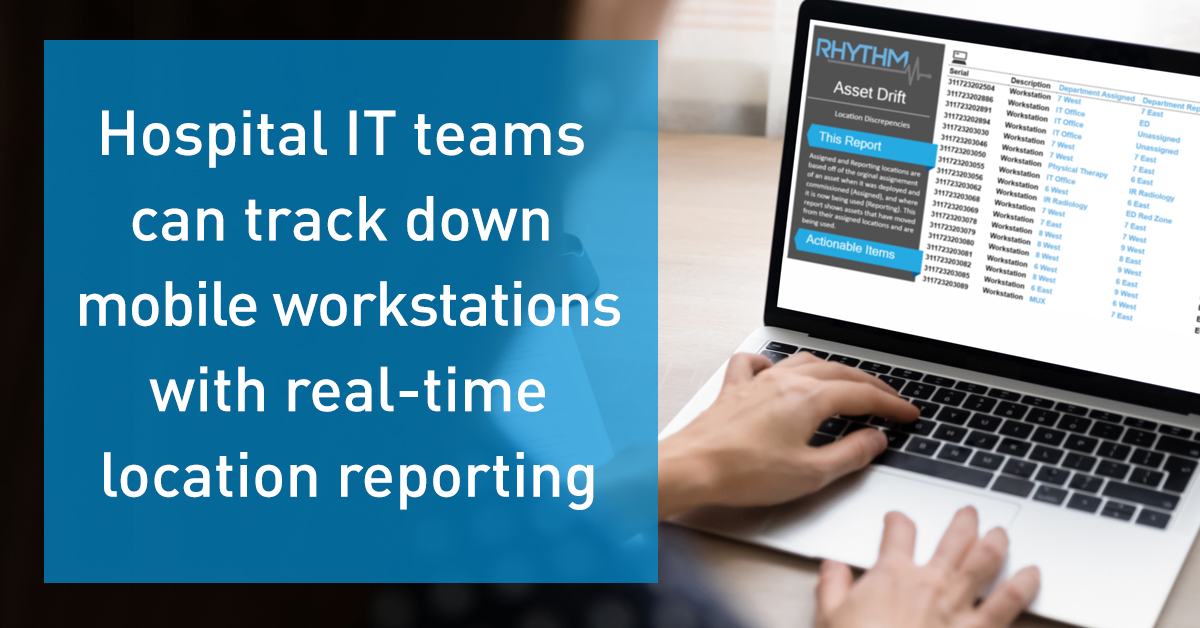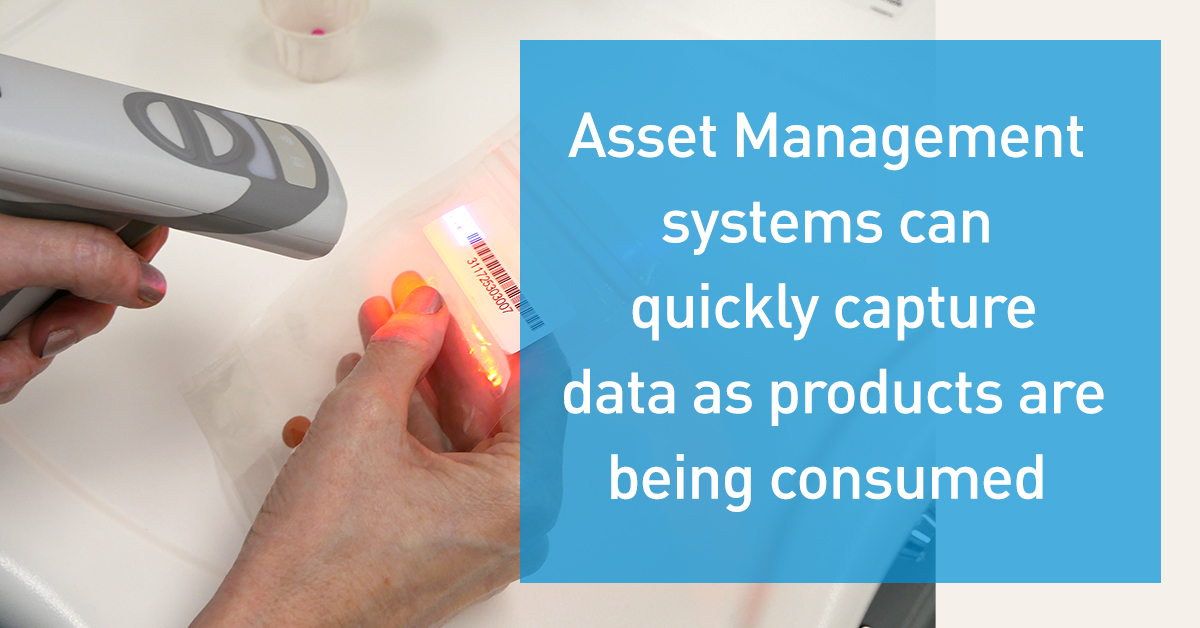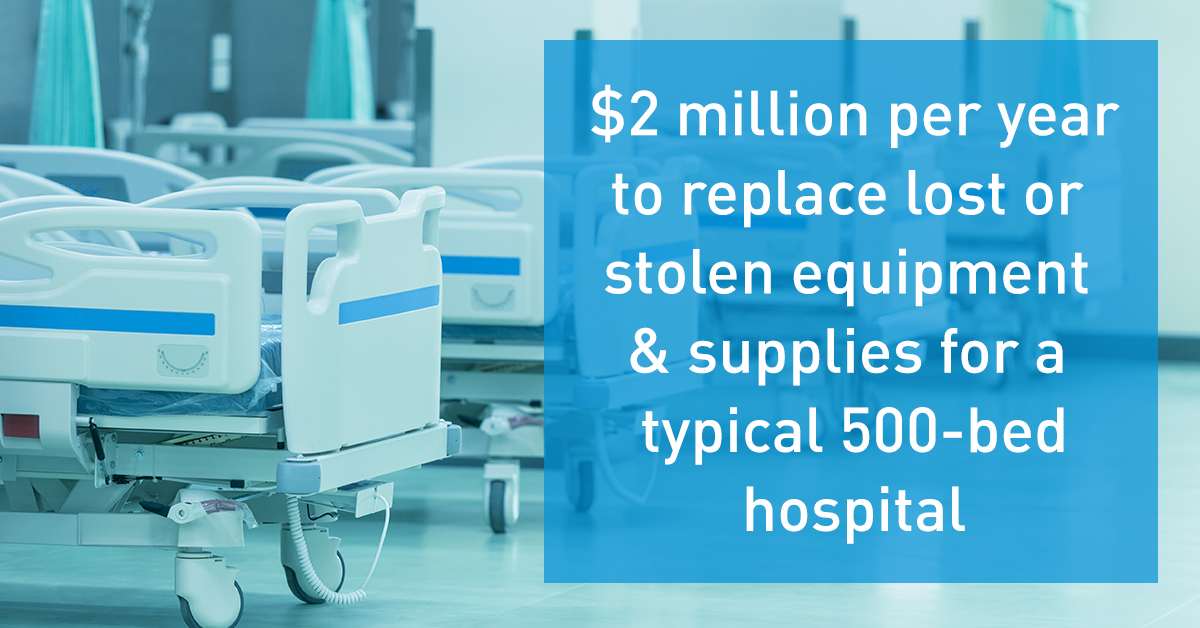
How Hospital Asset Management Systems Play an Active Role in Healthcare
We spend a good portion of our day looking for phones, keys, and eyeglasses. In this way, our memory serves as an asset management system – and not a very good one.
The stakes are higher in the hospital setting. For example, if medical supplies and equipment are not available in real time, the ripple effect touches patients, other clinicians, and procedures. This ripple is multiplied by the clinicians’ hourly rates and can have a negative impact on the quality of patient care.
For this reason, hospitals use asset management software to track healthcare-specific assets, such as beds, wheelchairs, infusion pumps, vital signs monitors, workstations on wheels, medical supplies, medications, and physical infrastructure like HVAC systems and compressors. Facility managers track these critical systems and equipment to ensure that the healthcare system functions optimally, especially in clinical areas.
Inventory tracking systems save time and reduce waste
Inventory tracking systems automate supply chain processes, allowing healthcare teams to improve workflows, eliminate manual counting, and manage expired and recalled products. Smart storage cabinets and readers enable automation while cutting down on manual supply management.
Emory Saint Joseph’s in Atlanta chose Cardinal WaveMark™ supply management and workflow system to manage supplies in their cath labs. The system cuts down on data entry redundancy, related errors, and missing charges. It also allows nurses to focus on patients and procedures rather than counting supplies. Nurses can grab tagged supplies and wave them in front of the RFID reader to record the usage. Rather than people manually tracking inventory, the system automatically captures the data updating inventory levels. Usage is captured for all devices and supplies, even from open cabinets.1
Looking for misplaced equipment drives up healthcare costs
The cost and burden of misplaced medical equipment leads to increased purchase costs and time wasted looking for resources, negatively impacting patient care. According to NursingTimes.net, over 30% of British NHS nurses reported spending around an hour looking for equipment on each shift.2 This combined cost represents $1.2 billion (U.S. equivalent) in wasted hours each year, but more importantly, the wasted hours could be better spent with patients. Hospital asset management systems allow doctors and nurses to spend less time tracking down the tools they need to provide care.
Hospital asset management and inventory tracking systems provide oversight
Asset management software tracks the status of vital assets. In the middle of a crisis, the system avoids wasting precious minutes looking for misplaced equipment. Inventory tracking software provides an alert when perishables have expired, provides oversight against unnecessary purchases, and controls against theft – all of which drive up costs. Most importantly, by tracking assets and automating procurement, these systems allow healthcare facilities to deliver patient care more efficiently.

Wireless technologies provide real-time visibility
Today, organizations across multiple industries are improving operational efficiencies by using real-time location systems (RTLS). These indoor positioning systems incorporate Bluetooth Low Energy (BLE) and other wireless communication technologies to deliver a real-time picture of where critical equipment is located within a facility.
In the hospital setting, RTLS allow nurses to track medical devices, like a workstation on wheels, with the use of tags and beacons. The BLE embedded within the mobile EHR workstation acts a tag that allows it to be tracked. A low-cost coin-sized beacon mounted in a ceiling broadcasts a Bluetooth signal to report the location of the mobile device as it roams throughout the hospital.
As the number of devices increases, hospital asset tracking software becomes more critical
As the number of devices used per bed in a hospital increases, so does the cost of a hospital stay. The cost per bed has risen by as much as 90% in recent years.3 Equipment such as IV pumps, endoscopes, crash carts, wheelchairs, and ECG monitors can often go missing.
A study by VHA, Inc. found that U.S. hospitals spend almost $4,000 per bed each year replacing lost or stolen equipment and supplies – or $2 million per year for a typical 500-bed hospital. Healthcare asset tracking has never been more critical.4
Real-time location systems improve clinical workflow efficiency
Clinicians need medical equipment to be readily accessible and well maintained. Searching for items can impede procedures, inflate costs, and lower patient satisfaction. RTLS provide visibility into location tracking so clinicians waste less time looking for equipment and can focus more of their time on patient care. In addition to better utilization of capital assets, RTLS improve clinical productivity and the quality of patient care.

Asset management systems can reduce clinical documentation fatigue for nurses
Enovate Medical has studied the impact of asset management with mobile EHR workstations. Today, EHR usage accounts for as much as 80% of the nurse’s shift. Significant productivity gains can be realized by applying healthcare asset tracking to a fleet of mobile workstations. The day-to-day scurry of room-to-room care coupled with a fluctuating hospital census result in misplaced assets and unreported maintenance needs.
For this reason, Enovate Medical developed Rhythm, an asset management platform with a dashboard view that tracks the entire workstation fleet. Rhythm allows IT staff to streamline service and optimize the equipment availability – across multiple departments, facilities, and locations. From experience, a workstation asset management system, equipped with BLE technology, should solve these problems:
- A nurse can’t find her workstation because it was left in another department,
- Workstations accumulate in departments that don’t need them,
- A workstation sits unrepaired for weeks because the IT department is unaware that it is down,
- A lack of historical data makes it impossible to forecast workstation needs and replacement,
- Clinical productivity suffers because battery health is not being tracked systemwide.
In most hospitals, the IT technology and mobile EHR workstations are allocated on a department basis. Enovate Medical’s asset management platform gives IT managers a big picture view. IT managers can move underutilized workstationsthroughout the hospital as patient counts shift, department needs change, or when equipment is pulled from service. In addition to maximizing efficiency, Rhythm also reduces the total cost of ownership.
Rhythm also provides continuous monitoring of workstation usage, allows diagnosing and rebooting from a distance, and monitors battery performance to manage replacements – all without disrupting patient care.
If a nurse grabs a replacement workstation without reporting the problem, Rhythm automatically delivers key information about the maintenance issue to hospital IT. This saves clinical staff from having to stop and manually report the issue and reduces the maintenance timelines significantly.
Reducing equipment costs while improving care
Hospital asset management systems are designed to help organizations improve operational efficiency and eliminate waste. Hospitals can leverage hospital asset tracking software and RTLS to track every piece of medical equipmentthroughout its lifecycle. What’s more, technologies like Enovate Medical’s Rhythm help optimize capital costs, manage assets in real-time, reduce wasted time for nurses, and deliver optimum patient care.

- https://www.cardinalhealth.com/en/solutions/wavemark-supply-management.html
- https://www.nursingtimes.net/archive/nurses-waste-an-hour-a-shift-finding-equipment-10-02-2009/
- http://www.mobilehealthtimes.com/finding-people-places-things-in-healthcare-facilities/
- https://www.pharmamanufacturing.com/assets/articles/2006/U%20of%20TX%20ROI-RFID%20Study.pdf

